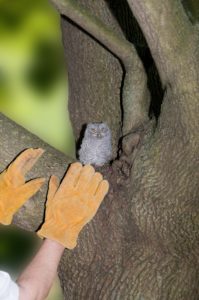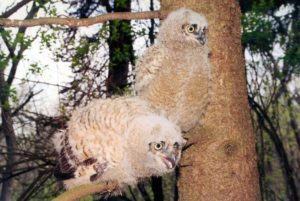If the parents are in the area, leave it alone. Owls often exit the nest very early; therefore, it’s natural for parents to tend to baby owls on the ground.
If this is a small species of owl that may easily fall to predation, you can place the baby high up in a tree for protection.
If this is a larger species, such as a great horned owl, and the baby has developed beyond being a helpless hatchling, leave it where it is. It can defend itself from most predators.
Monitor the family for a few days to make sure the parents don’t abandon the baby because of the nest accident. If it remains strong and healthy, the parents are caring for it. If it becomes weakened, then call a rehabilitator.
Find a Rehabilitator
GET THE BOOK
Your POCKET REFERENCE GUIDE to injured or orphaned wild animals!
Print book available on Amazon – $9.95
Available on Kindle – $2.99
Free on Kindle Unlimited
When rescuin g injured wildlife, the choices you make will impact that animal’s life and possibly your own. Knowing about the risks to the animal as well as to you, your family and your pets, along with the right advice from the beginning can mean the difference between a heartwarming, educational experience and disaster.
g injured wildlife, the choices you make will impact that animal’s life and possibly your own. Knowing about the risks to the animal as well as to you, your family and your pets, along with the right advice from the beginning can mean the difference between a heartwarming, educational experience and disaster.
This informative guide teaches would-be rescuers how to identify an animal in need, capture that animal, and safely transport it to a wildlife rehabilitator.
• How to determine the status of an injured creature using easy-to-follow flow charts
• Instructions on safe-capture methods, emergency care, transportation, and finding a professional wildlife rehabilitator

